How to Stop Self Sabotaging Habits and Stay on Track
You’re driven, intelligent, and disciplined—yet you find yourself inexplicably stuck, repeating patterns that undermine your ambition.
Learning how to stop self sabotaging habits isn’t merely about habit building; it’s about understanding the deeper subconscious resistance and emotional triggers that quietly sabotage your goals.
High performers often face internal friction and identity conflicts that prevent sustained progress. Recognizing and overcoming self-sabotage is crucial to building lasting productivity and precision habits.
For a broader look at self-sabotage in modern performance culture, BetterUp offers a detailed overview that aligns closely with these principles. In this article, we’ll dissect the root causes of these hidden patterns and deliver clear, actionable insights to finally break self-sabotaging patterns, reclaim your performance identity, and elevate your results.
What Is Self-Sabotage?
The Hidden Enemy of High Performers
Self-sabotage is the deliberate, unconscious, act of undermining one’s own success and progress. It’s not a lack of ability or ambition; rather, it’s a manifestation of subconscious resistance rooted in fear, self-doubt, or conflicting beliefs.
High performers, despite their accomplishments, are not immune. In fact, they’re especially prone due to heightened expectations, performance-oriented personalities, and an identity built around consistent achievement.
Dr. Judy Ho, a clinical psychologist and author of Stop Self-Sabotage, defines self-sabotage as behaviors or thought patterns that create unnecessary obstacles to success.
Whether through perfectionism, procrastination, or subtle acts of avoidance disguised as productivity, these self-sabotaging habits prevent you from actualizing your highest potential. The cognitive dissonance created by these conflicting actions and intentions drains energy and erodes self-esteem, setting a perpetual loop of diminished returns and internal friction.


Why We Undermine Our Own Progress
Understanding why we sabotage ourselves requires insight into human psychology and behavioral science. At its core, self-sabotage arises from subconscious resistance—an emotional resistance rooted deeply in fear, uncertainty, and limiting beliefs.
When faced with goals that stretch beyond our current identity or comfort zone, internal resistance emerges, creating subtle yet powerful disruptions.
Performance-driven individuals frequently experience a mismatch between their desired outcomes and their self-perception. This identity mismatch triggers subconscious resistance, manifesting through procrastination, perfectionism, and emotional avoidance.
Dopamine loops further reinforce these behaviors, offering immediate gratification from short-term distractions, even when they clearly compromise long-term performance goals. Breaking these loops requires deliberate cognitive restructuring and behavioral psychology interventions that target emotional triggers and identity alignment.
Signs You’re Falling Into Self-Sabotaging Habits
Subtle Self-Sabotaging Behaviors That Kill Momentum
Identifying self-sabotaging behaviors is challenging, as many high performers mask these habits as necessary or even virtuous. Common yet subtle behaviors include:
- Perfectionism: The constant pursuit of flawlessness delays action and stalls productivity.
- Procrastination: Frequently postponing essential tasks,
- often justified through prioritizing lower-impact activities. This “productive procrastination” feels busy yet achieves little of
- significance.
- Overcommitment: Taking on too many responsibilities can appear ambitious, but it’s often a tactic for avoiding genuinely important tasks that evoke subconscious resistance.
- Micromanaging: Excessively controlling minor details at the expense of strategic, high-value activities, resulting in diminished returns.
By learning to clearly identify sabotage triggers, you empower yourself to interrupt these detrimental habit loops.
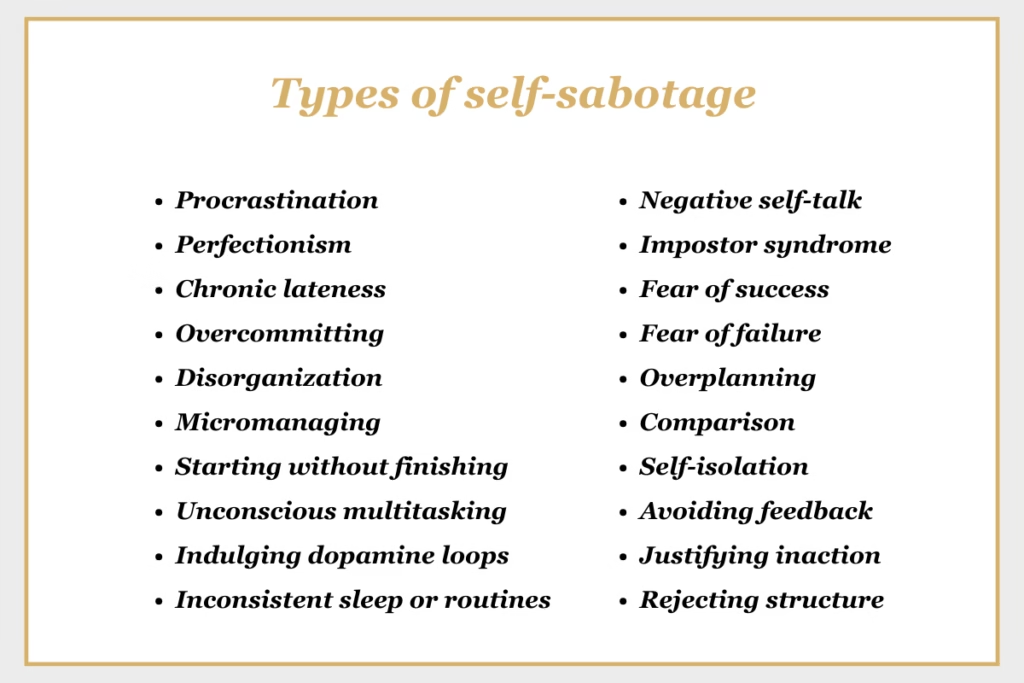

Emotional Triggers and Identity Conflicts
Behind these subtle behaviors lie powerful emotional triggers—fear of failure, fear of success, impostor syndrome, and self-esteem conflicts.
For instance, fear of failure might cause you to avoid tasks altogether, rationalizing it through procrastination. Conversely, fear of success might manifest as emotional resistance when nearing significant milestones, triggering behaviors that derail your progress.
Performance-oriented personalities often wrestle with identity conflicts when achievements outpace their internal self-image.
Achieving significant progress can paradoxically intensify subconscious resistance, resulting in self-sabotaging behaviors designed to restore comfort and familiarity—even at the cost of growth and productivity.
Mindfulness practices, cognitive reframing, and emotional intelligence strategies can help recognize and neutralize these emotional triggers, enabling you to build self-trust habits and lasting systems for sustained performance.
Understanding and identifying these subtle yet powerful forms of self-sabotage is the first critical step toward reclaiming your time, sharpening your focus, and elevating your performance.
How Self-Sabotaging Habits Are Rooted in Belief, Fear, and Resistance
Self-sabotaging habits often stem from deeply ingrained beliefs, fears, and resistance. Healthline’s breakdown of self-sabotage supports this view and outlines how mental health influences destructive patterns.
At its core, self-sabotage emerges from subconscious resistance—our minds’ subtle pushback against perceived threats, such as fear of failure, fear of success, or inadequacy.
Limiting beliefs, often formed early in life or after repeated negative experiences, become internal narratives that define our capabilities and boundaries. These beliefs foster subconscious resistance that propels individuals into patterns of procrastination, perfectionism, and avoidance behaviors, creating internal friction and cognitive dissonance.
Dr. Judy Ho, in her seminal work Stop Self-Sabotage, emphasizes the necessity of identifying and addressing these deeply held beliefs to effectively stop sabotaging your goals. The act of overcoming self-sabotage begins by bringing subconscious beliefs into conscious awareness through mindful practices, cognitive restructuring, and targeted self-reflection.
The Role of Identity Mismatch
A significant cause of self-sabotage is identity mismatch—when our current behavior conflicts with our self-perception. High performers particularly struggle with this as their achievements outpace their internal identity, creating internal friction.
When an ambitious individual’s external success doesn’t align with their internal identity design, subconscious resistance can emerge, creating a psychological tension known as cognitive dissonance. For a clear approach to rewiring your mindset for sustained discipline and persistence, see our breakdown here.
This mismatch can lead to self-esteem issues, where one questions their worthiness of success, reinforcing emotional resistance and causing self-sabotaging behaviors. Adopting growth mindset principles and habit building frameworks, such as identity design strategies, allows individuals to gradually align their identity with their performance goals, breaking the patterns of self-sabotage.
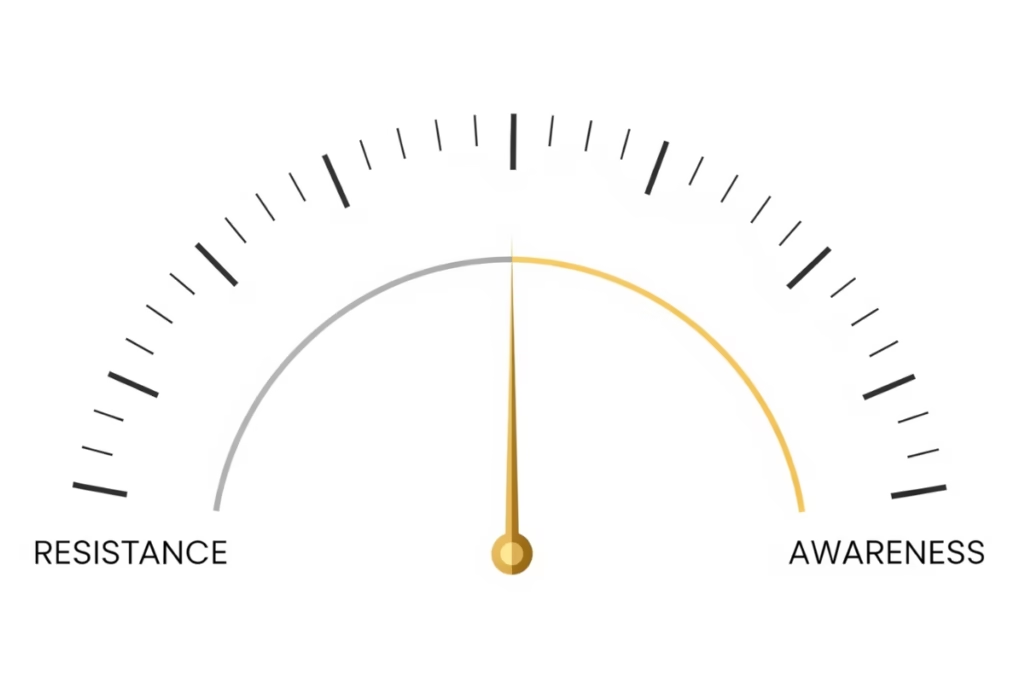

Dopamine Loops and Internal Friction
Another critical psychological aspect involves dopamine loops—the neurological pathways reinforcing behaviors through immediate gratification.
Self-sabotaging habits, such as procrastination and avoidance, often provide short-term relief through dopamine release, creating loops of dependency. While temporarily rewarding, these loops perpetuate destructive patterns, hindering long-term productivity and emotional well-being.
Understanding dopamine dependency is critical for implementing effective self-sabotage prevention techniques. Interventions focused on mindfulness, emotional regulation, and behavioral psychology can break these loops.
Mindfulness practices, for example, heighten awareness of emotional triggers, providing clarity on the behaviors that perpetuate these negative dopamine cycles. Replacing dopamine-driven avoidance behaviors with deliberate, precision habits forms the foundation for lasting change.
The Cost of Staying in Sabotage Loops
Lost Time, Energy, and Confidence
Persistently engaging in self-sabotaging habits comes at a steep cost. High-performing individuals, whose lives revolve around maximizing output and achieving ambitious goals, suffer particularly severe consequences.
Lost time is irreversible—hours wasted in avoidance or procrastination are hours that could have propelled productivity forward. Moreover, continual internal friction drains emotional energy, reducing overall mental clarity and performance capacity.
Beyond tangible losses, repeated cycles of sabotage erode self-esteem and diminish self-confidence. Each failed attempt to stop sabotaging your goals reinforces negative beliefs about your abilities, creating a self-fulfilling cycle of diminished confidence and deteriorating performance.
Without addressing these patterns, the cumulative effect on personal growth and career advancement can be profound and enduring. For additional insights, Verywell Mind’s podcast episode offers practical mental strategies for interrupting sabotage in real life.
Why Progress Feels Like a Treadmill
Self-sabotage traps individuals in a relentless cycle that feels akin to running on a treadmill—constant effort exerted with minimal forward motion.
Despite significant effort, progress stalls due to repeated cycles of procrastination, perfectionism, and emotional avoidance. Subconscious resistance and internal friction continuously counteract genuine attempts at improvement, creating frustration and a sense of stagnation.
This psychological loop can lead to chronic stress, emotional exhaustion, and burnout. Accountability partners and structured habit loops can help mitigate these effects, offering external support and systematic interventions to disrupt these negative cycles and encourage consistent progress.
How to Stop Self-Sabotaging Habits (Core Framework)
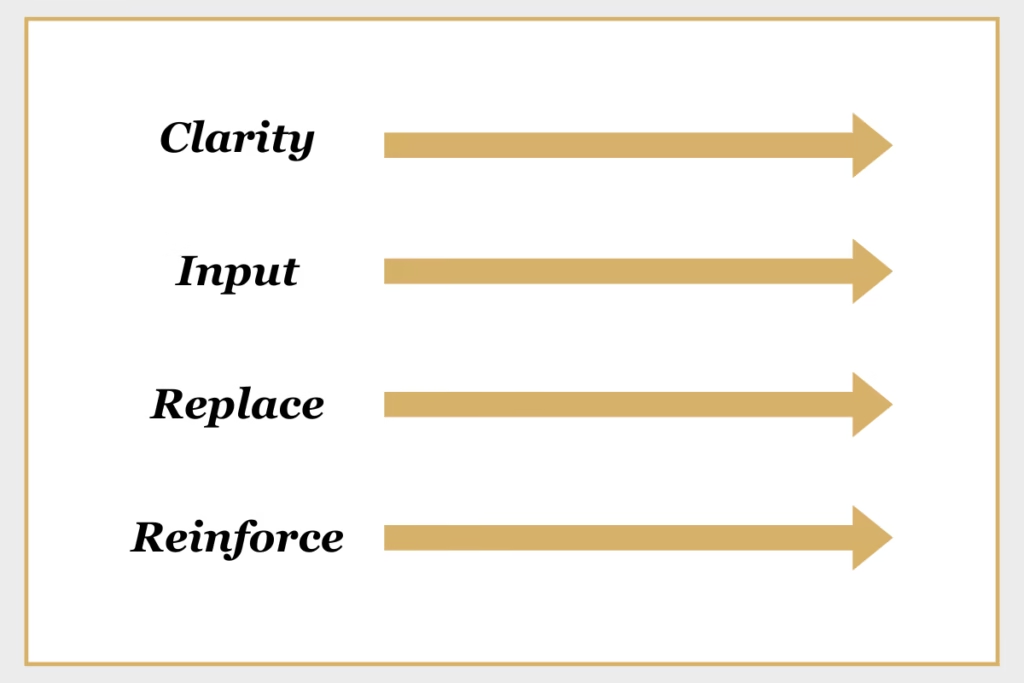

1. Identify the Pattern (Clarity)
The first essential step to breaking self-sabotaging patterns is developing clarity around these behaviors. To effectively stop self-sabotaging habits, individuals must identify sabotage triggers clearly and precisely. Practicing mindfulness and journaling instances of procrastination, perfectionism, or avoidance can illuminate patterns that were previously hidden in subconscious resistance.
2. Interrupt the Cycle (Tools + Awareness)
Once identified, disrupting these detrimental cycles becomes paramount. Interrupting these loops requires tools grounded in behavioral psychology and self-awareness practices. Techniques such as cognitive restructuring, mindfulness practice, and emotional intelligence strategies provide immediate interventions to halt destructive behaviors in real-time, allowing you to break self-sabotaging patterns as they emerge.
3. Replace with Precision Habits (Input + Output)
Simply interrupting negative patterns isn’t sufficient—lasting change demands replacement behaviors. Precision habits, developed through deliberate and structured habit-building frameworks like habit stacking and creating habit loops, replace self-sabotaging actions with productive alternatives. If you’re wondering how long it realistically takes to cement these new behaviors, explore our full habit timeline here. These new habits align input (effort, attention, resources) directly with desired outcomes, establishing clear and measurable pathways toward overcoming self-sabotage.
4. Reinforce with Identity and Environment
Sustainable behavioral change depends upon aligning identity design and environment to reinforce precision habits. Adjusting your self-perception to embrace performance-oriented personality traits helps integrate new habits into your daily routines authentically. Creating supportive environments—both physical and social—further solidifies this identity shift. Surrounding yourself with accountability partners and strategically structuring your environment minimizes subconscious resistance, embedding lasting change into your lifestyle.
By methodically following these steps, high-performing individuals can effectively and sustainably overcome self-sabotaging habits, achieving sustained productivity and performance excellence.
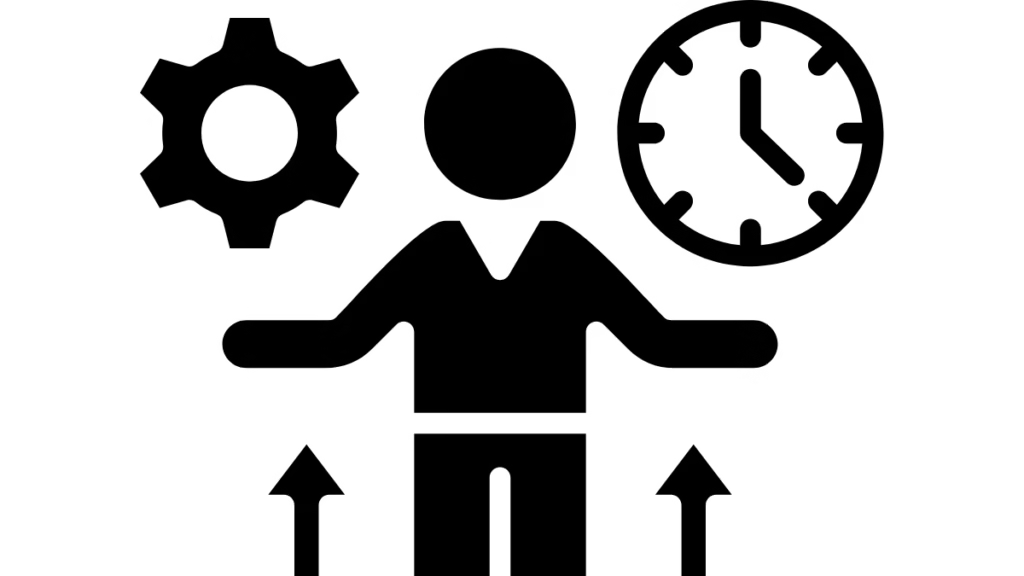

Real-World Examples of Replacing Sabotage With Precision
Example 1: The Perfectionist Procrastinator
A software engineer named Layla used to spend hours organizing her workspace before starting a task. Every document had to be in order and every tab perfectly aligned. But this obsessive tidiness masked a deeper issue: fear of failure.
Layla wasn’t organizing—she was avoiding. Her perfectionism disguised itself as productivity. And over time, it bred paralysis.
What changed? Layla didn’t try to “fix” her procrastination. She reframed it. Instead of focusing on output, she began measuring precision habits. Her morning routine included 15 minutes of raw, imperfect drafting—no polish, no overthinking.
She scheduled deliberate sprints with clear end times. And she used a technique from Dr. Judy Ho called “if-then replacement”—pairing a sabotage cue with a non-negotiable micro-action. When she felt the urge to delay, she triggered a countdown: five seconds to start or walk away.
With identity design in place, she saw herself not as someone who needed perfect conditions, but someone who performs under pressure.
This wasn’t just about overcoming self-sabotage—it was about building self-trust habits and creating a new loop: cue → clarity → movement. Layla’s system removed internal friction and broke the cycle that once held her captive.
Example 2: The Over-thinker
Marcus was known for his intellect. He could map a project in ten different directions before anyone else opened their notebook. But that same mind became his enemy. The more options he saw, the less action he took. His sabotage came in the form of planning. Not bad planning—endless planning.
The solution wasn’t to think less. It was to constrain the canvas. Marcus implemented what Thovia calls a “tight frame protocol”—a recurring habit stack that prioritized constraints over choices.
Instead of brainstorming endlessly, he gave himself three options per decision and five minutes to commit. He also wrote a daily recap on what wasn’t done—turning reflection into insight, not guilt.
He used habit stacking to pair his daily review with his commute, reducing resistance and reinforcing consistency. Over time, the habit loop shifted. Instead of spiraling in cognitive dissonance, Marcus trained his focus toward action by leveraging structured limits.
The transformation didn’t make him less thoughtful. It made his thinking useful. Strategic. On command. That’s the core of precision performance.
Example 3: The Momentum-Breaker
Selene had incredible starts. Whether it was a fitness challenge, a new client, or a content sprint—her energy surged in the beginning. But two weeks in, the fade would begin. Her default response to discomfort was withdrawal. Not overt quitting, but subtle erosion: skipped days, half-hearted attempts, suddenly “too busy.”
What helped wasn’t motivation. It was a system built for momentum maintenance. Selene restructured her environment to reduce friction—placing her tools, clothes, and work layouts where effort would normally dip. More importantly, she added weekly performance reviews—short, high-clarity reflections centered not on goals, but identity alignment.
She started asking, “Did I act in line with who I’m becoming?” And when resistance came—because it always does—she didn’t resist it. Instead she reframed it as signal. As data. A habit loop indicator to be examined, not escaped. Selene began using resistance as her internal project manager.
That shift—from sabotage to self-scanning—built consistency through self-compassion and performance tracking. Over time, she didn’t just stop sabotaging her goals. She made her habits unbreakable.
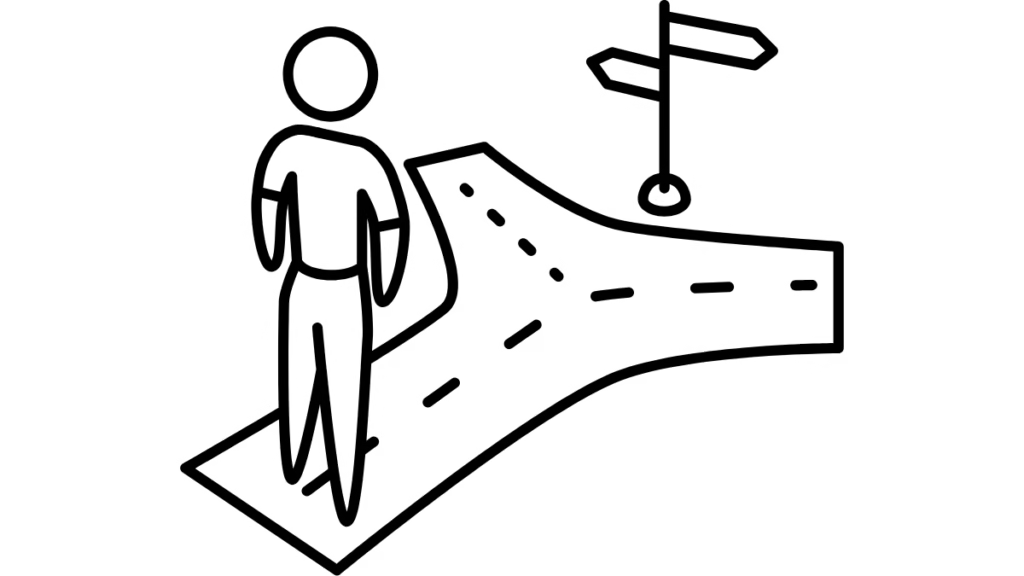

Staying on Track After Stopping Self-Sabotaging Habits
Tracking Identity, Not Just Tasks
Once you break the sabotage loop, the goal isn’t to “maintain”—it’s to evolve. This means shifting your focus from surface wins to internal signals. High performers often fall back into old patterns because they track checkboxes, not identity continuity.
Track traits, habits, and who you are when you show up at your best. Use a daily or weekly log to monitor:
- Energy vs. output
- Alignment vs. avoidance
- Clarity vs. chaos
This isn’t about guilt-tripping when you slip. It’s about catching small deviations before they compound. A broken streak doesn’t derail you if your identity remains intact. That’s where real progress lives.
Using Resistance as a Signal, Not a Wall
Resistance isn’t a red light. It’s a flare. A marker that you’re close to meaningful work. High performers often misinterpret resistance as a problem to fix—or worse, a sign they’re not ready.
In truth, resistance reveals proximity to growth. Instead of fleeing, investigate it. Ask:
- What belief is being challenged?
- What outcome am I afraid to face?
- What version of me am I defending?
This habit of inquiry turns subconscious resistance into conscious awareness. And when you’re aware, you’re in control. That’s how you reinforce self-sabotage prevention techniques: not through willpower, but through precision awareness.
Reinforcing Momentum with Systems and Review
Momentum isn’t magic. It’s method. Once you’ve replaced self-sabotaging habits, you need infrastructure to hold the shift in place. Three things matter here:
- Systemized reflection: Weekly reviews where you assess not just what happened, but why. What sabotaged your rhythm? What supported it?
- Environmental leverage: Tools, reminders, and friction reducers that make your high-performance behaviors the path of least resistance.
- Accountability architecture: Not necessarily people—but protocols. Check-ins, visual boards, habit trackers, or identity statements you interact with daily.
This is habit building as performance design. Every element becomes part of a larger habit loop, wired not for mere completion—but for identity reinforcement. If your habits falter, here’s how to repair them without starting from scratch. You’re not “staying on track”—you’re building a track so strong it’s harder to fall off.
Final Thoughts: What It Really Means to Perform
To perform isn’t just to work hard. It’s to work in alignment—to design systems so elegant they reduce decision fatigue, remove friction, and let your effort go further. Learning how to stop self sabotaging habits isn’t a motivational task—it’s a structural one. A design challenge. Psychology Today’s foundational resource on self-sabotage reinforces the importance of addressing both identity and structural patterns for long-term change.
When you strip away resistance, stop protecting a former self, and allow your daily habits speak louder than your fears—you don’t just build momentum. You become it.
This is the Thovia philosophy. We don’t chase perfection. Instead, we build clarity. Grinding blindly means nothing if you’re not performing with precision.
Don’t just work. Perform.
Common questions
u003cbr/u003eu003cstrongu003eWhy do I keep sabotaging my goals?u003c/strongu003e
u003cbr/u003eMany people sabotage their goals due to u003cstrongu003esubconscious resistanceu003c/strongu003e—deep-rooted fears, limiting beliefs, or emotional patterns that conflict with success. This internal friction often stems from an u003cstrongu003eidentity mismatchu003c/strongu003e or unresolved doubt about your capability or worth. Once you identify these sabotage triggers, you can begin replacing them with intentional, u003cstrongu003eprecision habitsu003c/strongu003e that align with your long-term performance identity.
u003cbr/u003eu003cstrongu003eHow can I stop self-sabotaging habits permanently?u003c/strongu003e
u003cbr/u003eTo stop self-sabotaging habits long-term, you need more than motivation—you need structure. That means: (1) identifying the specific behavior loop, (2) interrupting it with tools like u003cstrongu003ecognitive restructuringu003c/strongu003e, and (3) replacing it with high-leverage inputs tied to your goals. Reinforcing this system with u003cstrongu003eidentity designu003c/strongu003e and environment alignment makes the shift sustainable over time.
u003cbr/u003eu003cstrongu003eWhat are the signs of self-sabotage I might be missing?u003c/strongu003e
u003cbr/u003eCommon signs include u003cstrongu003eperfectionismu003c/strongu003e, u003cstrongu003eproductive procrastinationu003c/strongu003e, overcommitting, or constantly shifting priorities. These habits often disguise themselves as discipline, but they quietly drain momentum and reinforce internal resistance. If your output feels misaligned with your effort, you may be caught in a sabotage loop without realizing it.
u003cbr/u003eu003cstrongu003eIs procrastination a form of self-sabotage?u003c/strongu003e
u003cbr/u003eYes—u003cstrongu003eprocrastination is one of the most common self-sabotaging behaviorsu003c/strongu003e. It provides short-term relief from discomfort or fear but undermines long-term progress. By understanding the emotional trigger behind the delay and replacing it with a micro-action, you can disrupt the loop and build forward momentum.
u003cbr/u003eu003cstrongu003eCan perfectionism be self-sabotaging?u003c/strongu003e
u003cbr/u003eAbsolutely. While it may appear high-achieving on the surface, u003cstrongu003eperfectionism often masks fear of failure or rejectionu003c/strongu003e. It delays action, slows progress, and creates internal pressure that erodes confidence. Replacing it with progress-focused systems—like u003cstrongu003etime-boxingu003c/strongu003e, “imperfect starts,” and identity-based tracking—can dissolve the sabotage loop.
u003cbr/u003eu003cstrongu003eHow do I know if it’s burnout or self-sabotage?u003c/strongu003e
u003cbr/u003eThe difference lies in u003cemu003ecauseu003c/emu003e. u003cstrongu003eBurnoutu003c/strongu003e results from overexertion without recovery. u003cstrongu003eSelf-sabotageu003c/strongu003e, however, is often internal—stemming from fear, self-doubt, or identity conflicts. If you’re avoiding high-leverage tasks despite rest and clarity, it’s likely sabotage. If everything feels depleted—even the desire to improve—it may be time to address input recovery instead.





